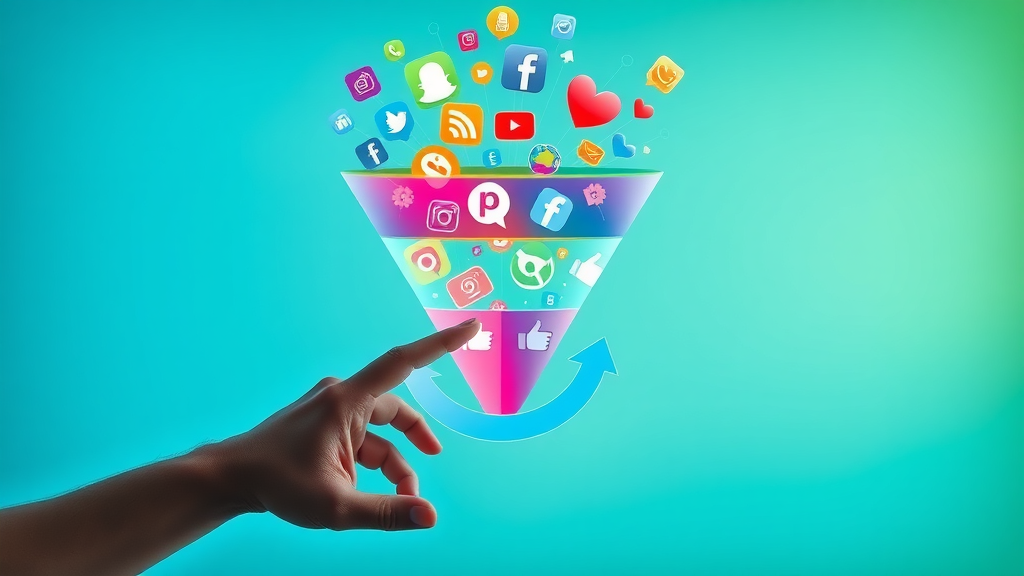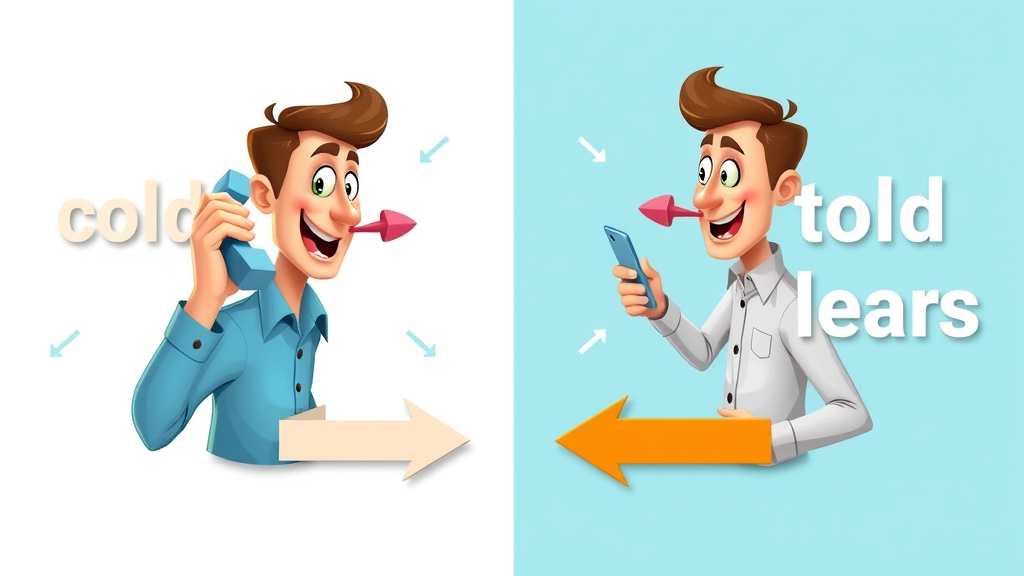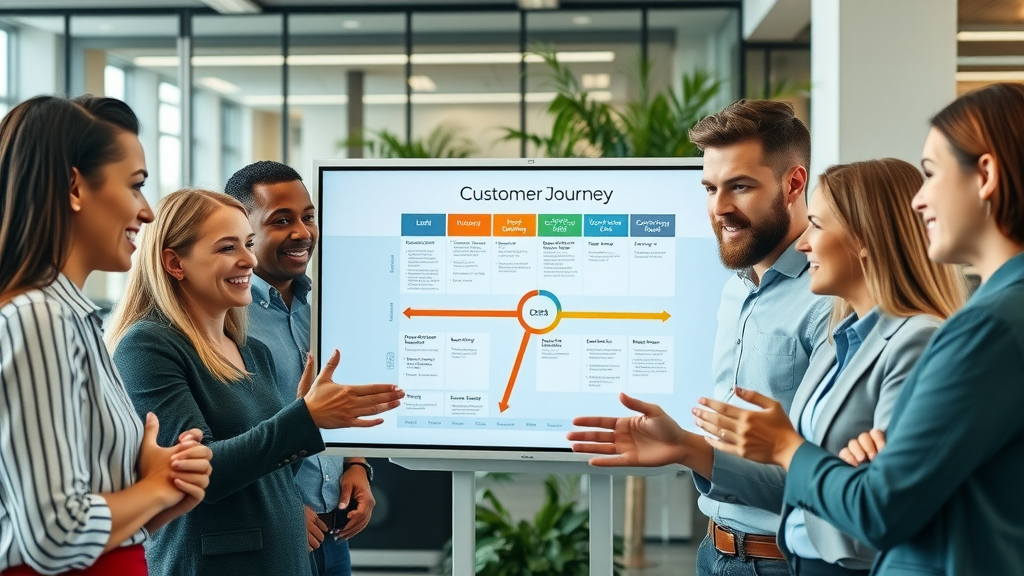Startling Statistic: Did you know over 78% of businesses using social media lead generation outperform those relying solely on traditional channels ? In the race for new customers, speed and strategy are everything—yet most brands still miss out on easy wins. Discover how you can outsmart your competition, harness cutting-edge techniques, and make your next social media lead gen campaign your strongest yet.

Unlocking the Power of Social Media Lead Generation: Why Most Brands Miss Out
For many brands, social media lead generation remains an underused goldmine. Companies often focus on posting content for likes and shares, missing the bigger picture— generating qualified leads that fuel their sales funnel . While traditional outbound methods like cold calling are seeing diminished returns, social platforms are teeming with high-intent audiences. What sets the top performers apart is a focused approach that captures valuable data, builds genuine engagement, and guides prospects smoothly through the lead gen funnel from awareness to conversion.
The stark truth? Most businesses underutilize social media ads, groups, and targeted campaigns . Investing in strategic social media lead gen unlocks precise audience targeting, instant feedback through analytics, and the ability to nurture leads at scale. It’s not about vanity metrics— it's about real, measurable growth . In this guide, you’ll learn how leading brands transform their approach and consistently outpace rivals by leveraging the true power of social media for lead generation.
A Surprising Statistic: The Untapped Potential of Social Media for Lead Gen
"78% of businesses that use social media lead generation outperform those that rely solely on traditional channels." – Industry Report
This stat reveals a massive opportunity gap in the market. Social media lead gen delivers a faster, data-driven pipeline—incredible when you realize traditional channels now struggle to deliver even a fraction of the same impact. If your business isn’t capturing leads on the right social platform, you’re missing out on both reach and relevance, leaving the door open for faster-acting competitors to step in and win over your potential customers.
What You'll Gain: Mastering Lead Generation for Social Media Success
- Understand the essentials of social media lead generation
- Explore actionable strategies for lead gen on every major platform
- Learn to optimize your media lead funnel for higher conversion
- See real-world examples of social media lead gen in practice
What Is Social Media Lead Generation and How Does It Work?

Defining Social Media Lead Generation: More Than Just Likes
Social media lead generation involves attracting and capturing potential customers’ information via digital channels like Facebook, LinkedIn, Instagram, Twitter, and TikTok. Unlike merely chasing likes or shares, true media lead gen requires compelling offers—think downloadable resources, contests, or newsletters—that motivate users to exchange their contact details. Successful social media lead generation is measured by the volume and quality of leads entering your sales funnel, not just by visibility or engagement alone.
Brands that focus on media lead generation create deliberate pathways for users to progress from interest to intent, leveraging targeted calls-to-action and tailored landing pages. This data-centric approach makes it possible to nurture relationships, personalize follow-up communications, and steadily move leads down the sales funnel toward conversion.
The Social Media Lead Generation Funnel Explained
Think of your lead gen funnel as a journey: At the top, brand awareness draws prospects in via engaging content or ads. In the middle, you offer value—perhaps a free eBook, webinar, or exclusive demo—to capture interest and gather contact details. Finally, at the bottom, you nurture these media leads with tailored communications and incentives designed to convert them into loyal customers.
Each social media platform represents a unique stage or channel in this funnel. For example, LinkedIn is powerful for B2B lead generation through tailored InMail and sponsored posts, while Instagram and Facebook excel at B2C lead gen with visually rich ads and shoppable posts. Optimizing every funnel stage on your chosen media platforms ensures you maximize both reach and conversion potential.
How Social Media Lead Gen Outperforms Traditional Lead Generation

Media lead generation via social platforms represents a quantum leap over traditional methods. Old-school approaches like cold calls or print ads rely on high volume and luck, while social media lead gen leverages targeting, analytics, and automation tools . This shift enables businesses to reach the right audience, at the right time, with personalized offers that drive higher conversion rates.
Unlike the broad strokes of mass marketing, social media ads allow precise segmentation by interests, behaviors, demographics, and even online activity. Data-driven insights help refine campaigns in real time, quickly identifying what content or call-to-action produces the highest rate lead. The result? Streamlined acquisition costs, scalable outreach, and a faster path to measurable ROI.
Key Social Media Platforms for Lead Generation Success
| Platform | Target Audience | Lead Gen Tools | Conversion Rate |
|---|---|---|---|
| B2C, B2B | Lead Ads, Groups | 9-12% | |
| B2B | Sponsored Content, InMail | 15-20% | |
| B2C, Influencers | Story Links, Ads | 8-11% | |
| B2B, B2C | Lead Cards, Hashtags | 5-8% | |
| TikTok | Gen Z, Millennials | Spark Ads, Influencers | 7-9% |
Social Media Platforms Overview: From Facebook to TikTok

Different social media platforms offer different strengths for lead gen . Facebook and Instagram deliver massive reach and robust lead ad tools, making them ideal for B2C businesses and influencers. LinkedIn is a powerhouse for B2B media lead gen, offering focused tools like sponsored content and direct InMail for decision-makers. Meanwhile, Twitter enables rapid engagement through its Lead Cards and strategic hashtag campaigns, suitable for both B2B and B2C environments.
One standout in recent years is TikTok , which engages younger audiences with Spark Ads and influencer partnerships, transforming the landscape for Gen Z and Millennial lead generation. Each social media platform offers unique ad products, analytics, and community features, so understanding where your audience spends time is critical for maximizing your lead gen results.
Choosing the Best Social Media Platform for Lead Generation
Selecting the right social media platform hinges on knowing your target audience and campaign objectives. B2B companies often find LinkedIn a natural fit due to its professional user base and high rate lead conversion tools. In contrast, lifestyle, wellness, and fashion brands excel on Instagram and Facebook, utilizing shoppable posts, story links, and engaging content to generate leads.
Assess your existing customer data and audience insights to determine where potential customers are most active. Experiment with small-scale campaigns across different media platforms, measure your lead generation results, and then double down on the channels driving the most quality leads . This strategic testing approach ensures your marketing investments pay off in faster, better-converting leads on social media.
How to Find and Engage Your Media Leads on Social Media
Spotting and nurturing media leads on social platforms starts with strategic social listening. Monitor conversations, keywords, and hashtags in your niche to identify interested prospects. Use targeted content and personalized social media ads to invite interaction and prompt users to enter your lead generation funnel. Collaboration tools and advanced CRM integrations make it easy to track engagement and keep potential leads moving toward conversion.
Remember, the key is continuous engagement . Respond promptly to comments and questions, deliver valuable content, and use retargeting to stay top-of-mind. By monitoring analytics and optimizing touchpoints, you’ll maximize brand awareness, trust, and ultimately, your social media lead gen success.
Proven Strategies for Social Media Lead Generation
Content That Converts: Ideas for Effective Social Media Lead Gen

- Interactive polls & quizzes
- Live video Q&A sessions
- Downloadable eBooks and guides
- Exclusive social media offers
- User-generated content campaigns
Creating engaging content is at the heart of effective social media lead generation . Modern users crave interaction, so formats like live video Q&As, polls, and quizzes often out-perform static posts. Consider offering exclusive gifts or discounts to those who share their contact information through lead capture forms. Downloadable content—such as eBooks and buying guides—acts as both a valuable resource and a proven conversation starter for potential leads.
Don't underestimate the influence of user-generated content campaigns , either. Contests or challenges that prompt followers to contribute photos, reviews, or stories not only boost brand awareness but prompt sharing behavior that puts your funnel in front of new audiences. By consistently offering value, you increase the likelihood prospects will trade information for access and, ultimately, become loyal brand advocates.
Leveraging Social Media Ads to Supercharge Lead Generation

Paid social media ads dramatically enhance your ability to generate leads at scale, thanks to ever-improving targeting options on every major platform. Facebook and Instagram Lead Ads let users share their details without even leaving the platform, reducing friction and nearly doubling conversion rates compared to traditional click-to-landing page approaches. Similarly, LinkedIn’s sponsored content and InMail allow B2B marketers to get in front of high-value prospects directly.
Analyze campaign performance daily—tweak targeting, creative assets, and calls-to-action to optimize for the best cost-per-lead. Use split testing (A/B testing) to discover which media ad formats, visuals, and offers yield the highest engagement and conversion, ensuring your lead gen budget is always allocated for peak returns.
Optimized Landing Pages: Turning Traffic into Media Leads
When your social media campaigns succeed at driving clicks, your landing page must seal the deal. High-converting landing pages feature a clear headline, concise benefits, and an ultra-simple lead capture form. Minimize distractions—remove menu bars, minimize external links, and make the call-to-action irresistibly clear. Match the copy and visuals to the original social media ad for message consistency, boosting trust and conversion likelihood.
Test different variations of your landing page regularly. Adjust layouts, shortage fields, or switch images based on analytics feedback. A/B testing (covered further below) shows what actually works for your audience, resulting in steady improvements in your social media lead gen performance.
Social Listening Techniques for Identifying Hot Leads

Social listening tools scan conversations in real time, giving you an edge in identifying “hot” media leads —those actively expressing need, pain points, or interest around your product category. Set up alerts for branded keywords, competitor mentions, and popular questions in your industry. Jump into relevant conversations with helpful advice, or offer a personalized demo to those showing buying signals.
Incorporate feedback to fine-tune your content, address evolving concerns, and highlight use cases that resonate with your audience. Consistent listening not only identifies hot leads but also shapes your ongoing brand messaging and future lead gen strategies.
Integrating Media Lead Gen with Your Marketing Funnel
Aligning Social Media Lead Generation with Sales Teams

For social media leads to convert, alignment between marketing and sales is crucial. Define clear criteria: what qualifies as a "sales-ready" media lead, how is information handed off, and who is responsible for timely follow-up? Use a shared CRM or lead-tracking system for transparency, and establish regular feedback loops so both teams can learn and optimize together.
Joint campaign planning ensures messaging remains consistent throughout the sales funnel, maximizing lead nurturing and conversion opportunities. The best-performing organizations tighten this feedback loop, making incremental improvements that drive major gains in the volume and quality of social media leads.
Nurturing Social Media Leads for Long-term Engagement
Converting a fresh media lead into a paying customer often takes multiple touchpoints. Automate email sequences that deliver value, address pain points, and gently guide the prospect down the sales funnel. Use retargeted social media ads to reinforce your message and remind prospects of what they’re missing.
Segment leads by source, behavior, and interest for more personalized communication, steadily increasing relevance and trust. Progressively share case studies, testimonials, or comparison guides to move leads forward—transforming initial curiosity into committed brand loyalty.
Automation Tools for Media Lead Generation

Automation tools like HubSpot, Mailchimp, or Zoho streamline the entire media lead gen process—from capturing details through Facebook and Instagram forms to delivering nurture emails and scoring lead readiness. Advanced platforms trigger responses based on user behaviors (e.g., clicking a download link or watching a demo), paving the way for perfectly timed follow-ups.
Embrace automation for repetitive tasks, but keep your messaging genuinely human. The blend of data-driven insights, personalized content, and timely automation creates a seamless experience that raises your average rate lead conversion and frees up resources for more strategic, creative efforts.
Analyzing and Optimizing Performance: Social Media Lead Gen Metrics
Key Metrics: How to Measure Leads on Social Media

Metrics drive continuous improvement in social media lead generation . The key indicators include cost-per-lead (CPL), click-through rate (CTR), landing page conversion rate, and lead quality assessment (e.g., lead score or sales acceptance rate). Tracking these metrics helps spend your budget more effectively, learn what resonates with different audiences, and spot underperforming campaigns.
Review these metrics weekly, adjusting ad creatives, content offers, or targeting criteria as needed. The result is a self-improving lead gen system that generates more (and better) leads on social media with every campaign iteration.
Conversion Rates: Interpreting and Improving Social Media Lead Generation
Your conversion rate is the percentage of users taking your desired action—typically filling out a lead form or requesting a demo. Social media campaigns with high conversion rates usually feature a strong offer, simple signup process, and message continuity between ad, post, and landing page. Analyze which channels, creatives, and offers lead to double-digit rates, then replicate and refine for sustained success.
If conversions lag, explore optimization levers like headline tweaks, shorter forms, video content, or retargeting warm leads via follow-up emails and ads. Monitor drop-off points in your social media lead funnel for actionable fixes.
A/B Testing for Social Media Lead Generation Campaigns
A/B testing is mission-critical for lead generation . Test multiple versions of your social media ads, landing pages, and lead gen offers—alter headlines, imagery, and calls-to-action to see what works best. Split audiences and measure which variations yield higher engagement and conversion rates.
Build a habit of iterative testing, using both quantitative analytics and qualitative feedback from leads themselves. The result will be constant improvement in your media lead gen ROI and fewer wasted ad dollars over time.
Overcoming Common Challenges in Social Media Lead Gen
Avoiding Pitfalls: What Causes Social Media Lead Generation to Fail?
Common pitfalls include treating all platforms the same, ignoring user intent signals, or focusing on quantity over quality leads. Skipping target audience research often results in generic, irrelevant offers that fail to convert. Without robust analytics or CRM integration, leads also fall through the cracks before meaningful conversations can begin.
Review every step in your social media lead generation process: from content and targeting to follow-up and reporting. Build in checks to ensure fresh leads are quickly actioned and the user experience remains frictionless at each touchpoint.
Turning Social Media Leads into Qualified Media Leads
Not all social media leads are equal—prioritization is key. Score leads based on actions taken, such as content downloads or event participation. Integrate your CRM with your social platforms to funnel leads seamlessly to sales for fast response. Engage promptly, asking qualifying questions to uncover readiness and budget.
Focus resources on those most likely to buy while nurturing others for future opportunities. This strategic handoff increases overall conversion rate lead, ensuring your efforts yield the highest ROI for your marketing team.
Navigating Platform Algorithm Changes in Lead Generation
Platform algorithms shift constantly, changing how content is displayed and discovered. To stay ahead, diversify your lead sources and monitor algorithm updates closely. Favor resilient strategies like email list building, which insulate you from abrupt changes in organic reach or ad costs. Stay current with best practices for each social media platform by joining industry groups and forums.
Test new features quickly—like Stories, Reels, or Spark Ads—while maintaining a strong foundation of reliable lead gen activities. This approach ensures consistent results, no matter how the digital landscape evolves.
Real-World Case Studies: Social Media Lead Generation Breakthroughs
B2B Social Media Lead Gen: LinkedIn’s Success Story
A top enterprise software company needed to expand its reach among decision-makers. By targeting industry-specific groups and running LinkedIn Sponsored Content with direct lead capture forms, the firm saw a 300% increase in high-quality media leads over traditional outbound efforts. Combined with automated nurture sequences and close alignment with sales, they converted 25% to paying clients within one quarter—demonstrating the unique power of LinkedIn for B2B lead generation.
B2C Social Media Lead Generation: Instagram’s Influence Power
A fitness brand leveraged media lead gen through Instagram Stories, running interactive quizzes and offering exclusive access to a 7-day meal plan in exchange for email signups. By A/B testing visuals and copy, they doubled their conversion rate, and subsequent retargeting campaigns kept prospects engaged, resulting in sustained sales growth. This example underscores the impact of visually rich platforms and relevant offers for B2C social media lead generation.
Social Media Lead Generation in Emerging Platforms: TikTok’s Rise
A DTC skincare startup tapped into TikTok by deploying Spark Ads and collaborating with micro-influencers for authentic product reviews. Viral challenges and unique hashtags pulled thousands into their funnel, with trackable links pushing prospects to optimized landing pages. Engagement on TikTok translated to a new, younger customer base—proving that next-gen platforms are essential for capturing new market segments and driving rapid lead gen growth.
People Also Ask About Social Media Lead Generation
What is a social media lead generation?
Social media lead generation is the process of using online platforms like Facebook, LinkedIn, and Instagram to attract potential customers and collect their contact information . The goal is to build a pipeline of engaged leads for further marketing or sales efforts, using targeted ads, engaging content, and interactive features to motivate action.
What is the 5 5 5 rule on social media?
The 5 5 5 rule suggests sharing five pieces of your own content, five pieces of content from others, and engaging with five new people each day on your social channels. This mix helps maintain a healthy balance between promotion, sharing value from your industry, and building relationships—all critical for successful social media lead generation.
What is the best social media platform for lead generation?
The best social media platform for lead generation depends on your business. LinkedIn stands out for B2B lead gen, thanks to professional targeting and high conversion rates. For B2C and influencer-driven brands, Facebook and Instagram deliver robust ad tools and massive reach. Don’t overlook emerging platforms like TikTok for innovative campaigns targeting younger audiences.
What are the ways to generate leads from social media?
Effective ways to generate leads from social media include leveraging lead ads , running contests or giveaways, offering downloadable resources, using interactive polls or live videos, and incorporating social listening to identify prospects. Refine your approach with analytics and iterative testing to maximize your results.
Expert Insights: Quotes on Social Media Lead Generation
"Your brand is what people say about you on social media when you're not in the room." – Chris Brogan
"Successful social media lead generation is about building trust, not just collecting emails." – Ann Handley
Frequently Asked Questions About Social Media Lead Generation
How can I ensure my lead generation strategy is compliant with data privacy laws?
To stay compliant, always inform users clearly about data collection and gain explicit consent before capturing details. Use secure forms, respect opt-out requests, and follow regulations like GDPR or CCPA, depending on your audience’s region. Regularly review and update your privacy policy in line with evolving rules on each social platform to protect both leads and your business.
Which KPIs matter most for social media lead gen success?
The most important KPIs for social media lead gen include cost-per-lead (CPL), conversion rate, lead quality score, and time-to-follow-up . Track how many leads enter your funnel from each platform, how many convert to customers, and how fast your team acts. These insights allow for continual optimization and maximum ROI.
Are paid social media ads worth it for generating high-quality leads?
Yes, paid social media ads are highly effective—especially when targeted properly and paired with clear calls-to-action. They can reach very specific audiences with tailored messages, resulting in better-quality leads and a higher conversion rate than organic methods alone.
How do I convert social media leads into paying customers?
To convert social media leads into paying customers, nurture relationships through relevant content, follow up quickly, and align your messaging along the buying journey. Use retargeting, personalized emails, and case studies to build trust and address objections—keeping prospects engaged until they’re ready to purchase.
Key Takeaways for Winning at Social Media Lead Generation
- Focus on the right social media platforms for your audience
- Create high-value, engaging content tailored to each platform
- Use social media ads and automation for scalable lead gen
- Measure your success and iterate for continuous improvement
Take Action: Outperform Your Competitors in Social Media Lead Gen
Ready to level up your social media lead generation and leave the competition in the dust? Choose your platform, build your best offer, and implement the proven strategies above—and watch your lead funnel fill faster than ever before.
A video walkthrough highlighting the top 5 actionable strategies for social media lead generation in 2024, including expert tips and visual examples of successful campaigns on each major platform.
Sources
- Sprout Social – https://sproutsocial.com/insights/social-media-lead-generation/
- HubSpot – https://www.hubspot.com/
- Buffer – https://buffer.com/library/social-media-lead-generation/
- WordStream – https://www.wordstream.com/social-media-lead-generation
To enhance your understanding of social media lead generation, consider exploring the following resources:
- “7 Social Media Lead Generation Strategies for 2025” ( sprinklr.com )
This article delves into emerging trends such as short-form videos and AI-powered audience segmentation, offering insights into innovative approaches for capturing leads.
- “5 Effective Social Media Lead Generation Strategies” ( involve.me )
This piece discusses practical tactics like hosting virtual events and leveraging social proof to build trust and attract potential customers.
By exploring these resources, you’ll gain valuable insights into advanced strategies and practical tactics to enhance your social media lead generation efforts.
 Add Row
Add Row  Add
Add 




Write A Comment